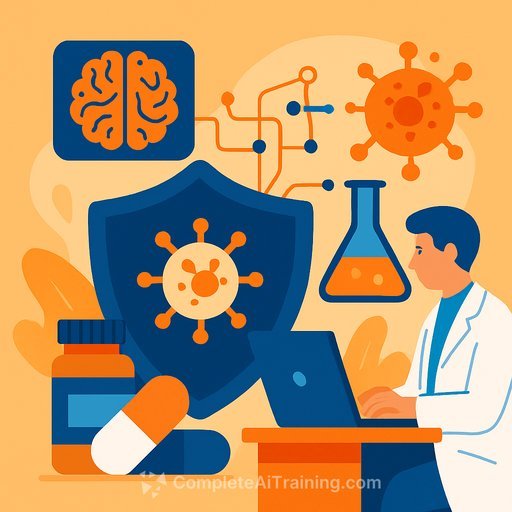January 16, 2024 - GHDDI and Microsoft Research use AI to make progress in discovering new drugs for global infectious diseases
The announcement signals momentum for AI-assisted discovery in areas that still carry high mortality and economic burden. For scientists, the takeaway is clear: integrated data, strong models, and disciplined validation can shorten cycles from target to hit.
Why this matters to research teams
- Traditional discovery timelines are long and expensive; AI can shrink candidate triage and increase hit quality.
- Infectious pathogens evolve and vary by region; models that learn across modalities can surface targets and chemistries that generalize.
- Scaled compute and standardized data pipelines make global collaboration more practical.
What "significant progress" often looks like in practice
- Target and pathway nomination from literature graphs, omics signals, and known bioactivity.
- Structure-informed modeling (e.g., predicted or experimental protein structures) to guide docking and ML-based scoring.
- Virtual screening at scale with ML triage, followed by focused synthesis and assay loops.
- De novo design seeded by actives to expand scaffold diversity under ADME/Tox constraints.
- Active learning: lab feedback continuously retrains the model to raise hit rates and reduce false positives.
A practical playbook you can adapt
- Data first: unify assay, bioactivity, and pathogen metadata. Track assay versions to control drift.
- Model strategy: start with simple baselines, then add graph models or sequence/structure hybrids where they add lift.
- Screening pipeline: fast ML prefilter → physics/structure checks → medicinal chemistry review before synthesis.
- Safety early: rule-based and ML ADME/Tox filters, in silico off-target checks, and flagged substructures.
- Feedback loop: prioritize uncertain or diverse chemotypes for the next batch. Measure learning efficiency, not just raw hits.
- Reproducibility: pre-register analysis plans, lock datasets for key comparisons, and keep full audit trails.
Quality guardrails
- Bias: balance datasets across pathogen strains and assay conditions to avoid overfitting to easy cases.
- Assay reliability: re-run controls and add orthogonal assays to confirm mechanism.
- Synthesis success: track makeability and vendor lead times alongside model scores.
- External validation: confirm hits in independent labs before advancing.
Metrics that matter
- Hit rate uplift vs. historical baselines and random docking.
- Scaffold diversity at fixed activity thresholds.
- False positive and false negative rates in prospective batches.
- Time and cost per qualified hit; time from hit to lead criteria.
- Reproducibility across assay sites and lots.
Collaboration considerations
- Data governance: clear rules for pathogen data sharing and patient privacy where applicable.
- Compute: plan for burst capacity during screening; cache features for reuse across targets.
- IP and publishing: align early on preprint vs. peer-reviewed timelines and what gets open-sourced.
What to watch next
- Peer-reviewed results describing targets, assays, and prospective validation.
- Public datasets, code, or benchmarks that let the community reproduce findings.
- Clinical translation signals: PK/PD studies, safety profiles, and pathogen resistance monitoring.
Learn more and stay current
Upskill your team
If you're building AI-enabled discovery workflows, curated learning paths can shorten the ramp-up for your scientists and data staff.
Get Daily AI News
Your membership also unlocks:
700+ AI Courses
700+ Certifications
Personalized AI Learning Plan
6500+ AI Tools (no Ads)
Daily AI News by job industry (no Ads)






